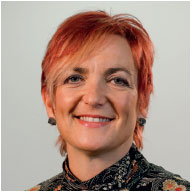Responding to female genital mutilation: multi-agency guidance
A framework for agencies and practitioners to develop and agree processes that promote the safety and wellbeing of women and girls.
Ministerial Foreword

Angela Constance
Cabinet Secretary for Communities Social Security and Equalities
Figures from the World Health Organisation tell us that more than 200 million girls and women alive today have been cut (in a procedure which partially or wholly removes or injures their genitalia, for non-medical reasons) in 30 countries in Africa, the Middle East and Asia where Female Genital Mutilation ( FGM) is concentrated [1] . This practice is a physical manifestation of the deep rooted inequality between the sexes; it is an illegal and unacceptable practice which violates the human rights of women and girls.
The Scottish Government is committed to tackling inequality and to preventing and ending all forms of gender based violence, as outlined in Equally Safe: Scotland’s strategy for preventing and eradicating violence against women and girls.
There are no quick fixes to tackling FGM and there is no single solution to ending the practice. In Scotland we are taking a collaborative considered approach to the best way to tackling the practice, making sure that what we do helps prevent FGM, provides protection to those at risk, delivers the services that those affected require and through participation gives a voice to communities affected by this practice.
Importantly we need to ensure that those who may be called upon to protect those at risk of FGM, or who may have to respond to the consequences of it are equipped with the relevant information and guidance to understand what is required of them. The complexities associated with FGM, such as why it is done, by whom, and what it signifies, mean that responding appropriately can be challenging.
This guidance provides a framework within which agencies and practitioners can develop and agree processes for working collaboratively and individually to promote the safety and wellbeing of women and girls, and supplements agencies and organisations own policies and procedures on FGM.
It covers; how to identify whether a girl (including an unborn girl) or young woman may be at risk of FGM; how to identify a girl or woman who has undergone FGM; how to protect those at risk and support those already affected; and how to prevent and end FGM.
Recognising the importance of multi-agency working, this guidance is for all services, agencies, organisations and individuals responsible for protecting and promoting the health and welfare of women and girls. This includes, but is not limited to, local authorities, Police Scotland, the NHS and third sector organisations that work with girls and women at risk of or affected by FGM, or deal with its consequences.
It also makes clear that statutory bodies and strategic partnerships such as local authorities, health boards, Police Scotland, Community Planning Partnerships, and integrated joint boards should ensure that their member agencies work together effectively to tackle FGM.
It outlines the issues and presents good practice when dealing with survivors. It sets out how agencies, individually and together, can protect girls and young women from FGM, and how they can respond appropriately to those who have been affected. The best way to make sure that women and girls are protected and supported, now and in the future, is for agencies to work together and with affected communities, to provide a multi-agency response.
Without the dedication of individuals and partners across the statutory, third sectors and from affected communities we would not have been able to develop this comprehensive guidance.
Therefore I would like to take this opportunity to express my thanks to everyone who has contributed. It is their hard work, commitment and their expertise that has delivered a resource which will contribute directly to our work to prevent and eradicate this practice.
Angela Constance
Cabinet Secretary for Communities Social Security and Equalities
Contact
There is a problem
Thanks for your feedback